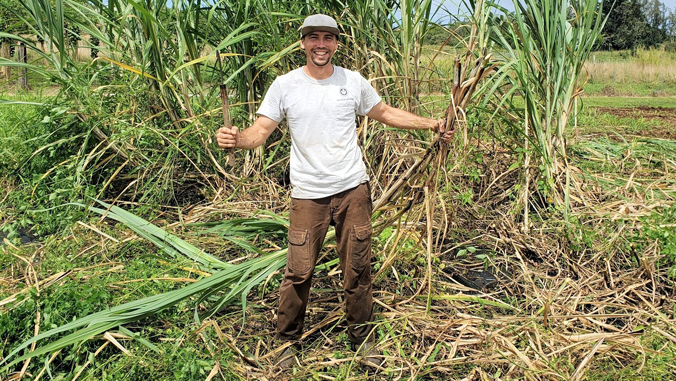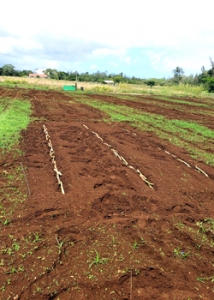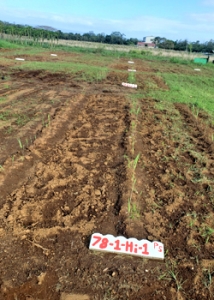
A groundbreaking study investigating the growth of selected varieties of sugarcane to convert into high-performance jet fuel is underway at the University of Hawaiʻi at Hilo College of Agriculture, Forestry, and Natural Resource Management (CAFNRM). Utilizing advanced technologies in agronomics and bioeconomy, the researchers are ultimately looking to improve the island’s environmental sustainability, build a stronger economy and create educational opportunities for students.

“The aviation industry recognizes that bio-based or sustainable aviation fuels are essential to the future of aviation,” said CAFNRM Dean Bruce Mathews, a principal investigator on the project. “Fully one-half of the industry’s greenhouse gas reduction goals for 2050 can only be achieved via sustainable jet fuels. Electric airplanes are only feasible for small planes on short-distance flights and the only electric airplane under development that has substantial range is a hybrid that still requires liquid fuel.”
Field trials growing different varieties of sugarcane at the UH Hilo Agricultural Farm Laboratory in Panaʻewa began in February, with support from the U.S. Department of Agriculture’s Daniel K. Inouye U.S. Pacific Basin Agricultural Research Center in Hilo.
The project is a collaboration between the CAFNRM and the Joint BioEnergy Institute (JBEI) in California, one of four regional U.S. Department of Energy-funded Bioenergy Research Centers.
Why sugarcane?


Peter Matlock of JBEI, is also serving as CAFNRM’s bioeconomy research and commercialization specialist. Matlock, a strategic advisor for aviation fuels, said sugarcane was selected as the crop of focus because it is a tremendously prolific biomass (plant material) producer.
Traditionally, the commercial industry has accessed only the sucrose from the plant, which continues to serve as a foundation for the world’s sugar industry. But when growing sugarcane solely for sugar, the rest of the crop, specifically major plant biomass components known as lignin, cellulose and hemicellulose, normally go to waste.
The conventional practice of burning sugarcane prior to harvest is to eliminate extra biomass material that previously had limited value, and residual biomass left over after sucrose extraction is typically burned to make power. Converting this biomass into high-valued products such as high performance jet fuel generates more revenue from the same plant material and eliminates incentives to burn crops—reducing air pollution as a bonus.
“The interesting thing is if we can take the rest of the plant and break it apart, we’d≠ also have yummy digestible bits that can be fed into microbes to make our end products,” Matlock explained. The end product he mentioned would be the conversion of sugarcane into biofuel for aviation use. This fermentation process is much more ideal than traditional chemical synthesis, which often involves high heat and high pressure to force a reaction.
For more go to UH Hilo Stories.
—By Kiaria Zoi Nakamura, a UH Hilo student earning a bachelor of arts in English with a minor in performing arts and a certificate in educational studies.
"fuel" - Google News
April 19, 2021 at 01:03AM
https://ift.tt/3uSjols
Can sugarcane create jet fuel? | University of Hawaiʻi System News - UH System Current News
"fuel" - Google News
https://ift.tt/2WjmVcZ
Bagikan Berita Ini















0 Response to "Can sugarcane create jet fuel? | University of Hawaiʻi System News - UH System Current News"
Post a Comment